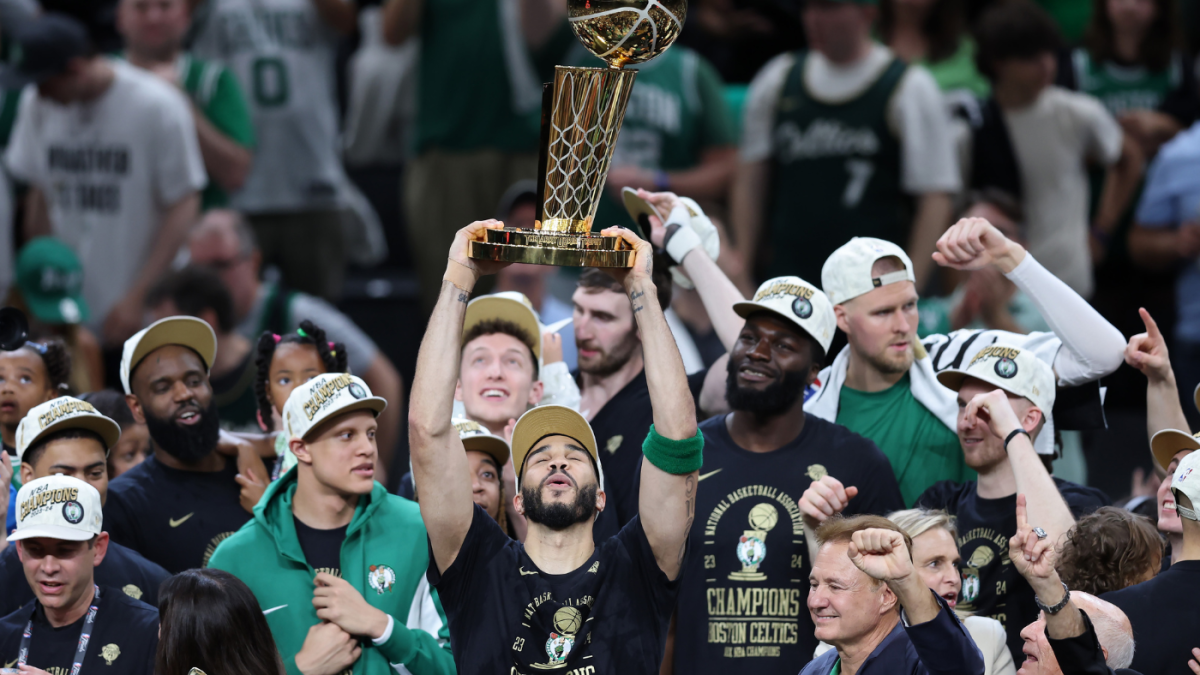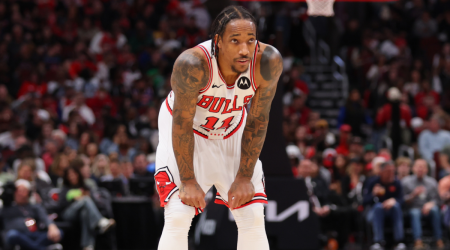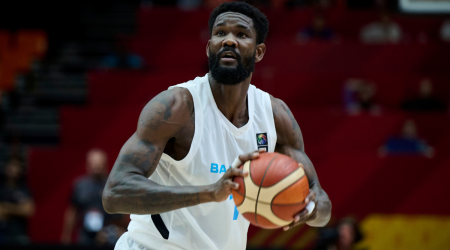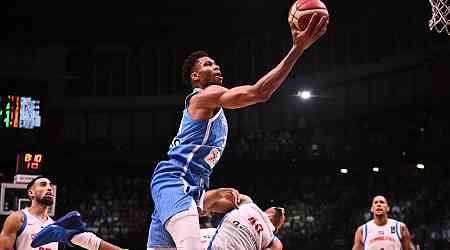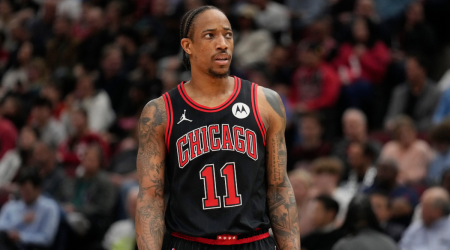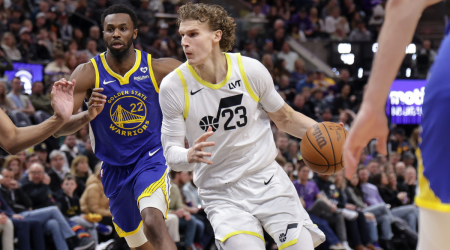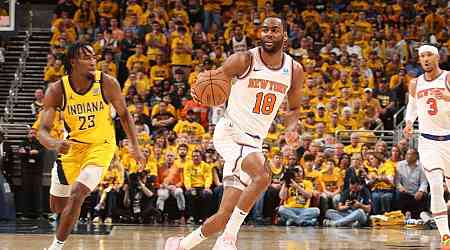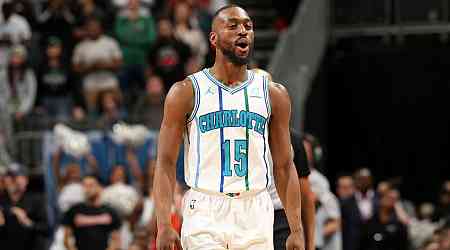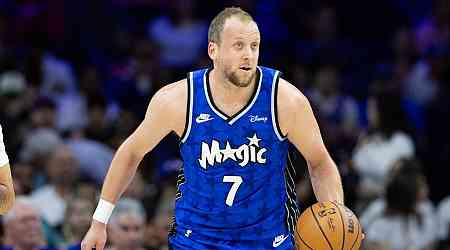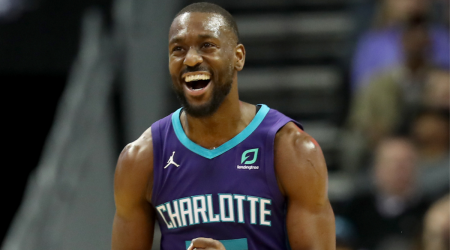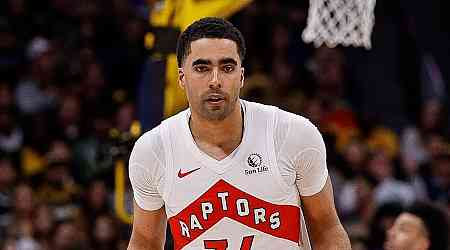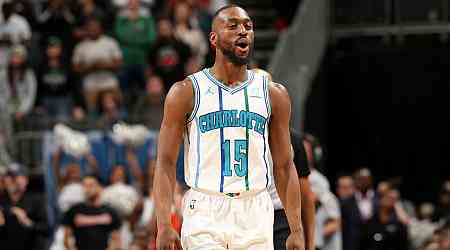
The contract extensions that the Boston Celtics gave to Jayson Tatum and Derrick White on Monday were no-brainers. White is going to earn around $30 million less than Immanuel Quickley over the next five years because the CBA limited what Boston was legally allowed to pay him. White is the better player, and Boston got a discount.
Meanwhile, Tatum didn't exactly give the Celtics a discount, but the super max for a First-Team All-NBA player in his 20s is fair market value. Remember, the new television deal is expected to increase the salary cap by 10% annually. Tatum's deal will include the maximum allowable 8% annual raises. On a relative basis, that contract is going to look cheaper and cheaper with each passing year.
But the two of them together along with Boston's pre-existing contracts for Jaylen Brown, Jrue Holiday and Kristaps Porzingis will make the Celtics one of the most expensive teams in NBA history in the coming years. Cap expert Yossi Gozlan projects Boston's total payroll and luxury tax bill for the 2025-26 season to reach around $438 million... and that does not include a potential new deal for Al Horford, if he is still playing at that point. That still has Boston far behind Phoenix's 2025-26 projection, but it still is an enormous price to pay for any NBA roster, and one that very few teams could sustain for long.
Short-term payments aren't even the only issue here. There are three other extenuating circumstances at play:
- Celtics owner Wyc Grousbeck announced that he plans to sell his stake in the team on Monday. Grousbeck has typically been willing to pay the tax for winners. He approved the Tatum and White extensions. But we have no idea how much a new owner would be willing to spend on the roster. Sometimes you get a Mat Ishbia, who's willing to throw caution to the wind for a good enough chance of winning. Sometimes you get a Tilman Fertitta, who let Trevor Ariza leave on a one-year deal, despite his Rockets very nearly winning the championship in the year before.
- The second apron punishes teams in ways that extend beyond the owner's wallet. It severely limits your ability to make roster changes. Maybe the Celtics are fine with their current roster on a long-term window, but even if they are, the most damaging element of the second apron comes in the form of draft pick freezing. When you cross the second apron line, your first-round pick seven years from then is "frozen," meaning it cannot be traded, and if you remain across the line for more than two consecutive seasons, then that pick automatically drops to the bottom of the first round. That penalty is so steep that the widespread expectation is that even teams willing to pay second apron taxes will only be willing to do so for two years before dipping back down to protect their future picks. This isn't a situation in which you can get below the line for a year and have the clock reset, either. Once you've finished a season as a second apron team, you have to stay below the line in three of the next four seasons to avoid the pick drop.
- The luxury tax formula is changing starting in the 2025-26 season, and it is going to be especially punitive to repeat payers like Boston. Under the old system, the repeater tax started at $2.50 for every $1 above the line a team spends within the first $5 million. That figure then goes up to $2.75 for the next $5 million after that, $3.50 after that, $4.25 after that, and then, for every additional $5 million tier, the tax rate increases by another 50 cents per dollar. This is already a prohibitively expensive system, but it's about to get much more expensive. The new repeater tax penalty starts at $3 for every $1 above the tax line a team spends within the first bracket. The next bracket goes up only to $3.25... but after that, it goes up to $5.50, then $6.75, and then, finally, it adds another 50 cents per dollar at each additional bracket after that. In the past, these brackets were fixed in $5 million increments. Moving forward, they will increase at the same rate that the cap does, so this will buy teams a bit more breathing room as they climb up the board. But on balance, it is going to be far more expensive for teams like the Celtics to operate far above the tax line even if they are willing to accept the on-court consequences of doing so.
Put all of that together and, well, it's hard to imagine the Celtics keeping this entire group together for more than a few years without making some concessions. So, how long could the Celtics feasibly contend with this group of players?
Well, if longevity is the goal for Boston, the first order of business is ducking below the second apron line for the 2024-25 season. Getting below it for the 2025-26 season will be basically impossible, so Boston needs to delay the clock for an extra year. The second apron has been set at $188,931,000 for next season. Right now, the Celtics owe 13 players (including rookie Baylor Scheierman, who has not signed, but will likely earn 120% of his scale figure as is the industry standard) $194,337,300, according to Spotrac.
Right away, we're going to have to do some trimming. If the Celtics can dump Payton Pritchard into someone else's cap space or trade exception, they can get back below the line with an incomplete roster. That would take them to $187,640,871. However, they'd need to add at least two more rookie minimum players just to field a complete 14-man roster. The rookie minimum for next season will be $1,157,153, so two of those take the Celtics back above the line at $189,955,177.
Still, we've closed most of the gap here. The simplest way to close the rest of it would be to trade Jaden Springer and his $4,018,363 salary. This would not only buy second apron breathing room, but give the Celtics a bit more optionality in the kinds of free agents they could pursue to fill out their roster. For example, they could choose to sign a more experienced free agent for the higher veteran's minimum salary of $2,087,519 under this scenario.
In a perfect world, the Celtics would get all of this squared away here and now. Technically, though, they'd have the entire season to get it sorted out. They could try to get off of money at the trade deadline instead, and doing so might give them different paths. Imagine, for instance, that Al Horford, who is 38 years old, either experiences significant decline or a major injury next season. Then maybe moving off of his $9.5 million salary becomes more palatable than dumping the younger Pritchard. In all likelihood, the Celtics will take this into the season and attempt to figure it out then. That's a risky approach.
Just look at what Denver is going through right now. The Nuggets signed Zeke Nnaji to a four-year, $32 million extension last offseason that looked harmless at the time. This offseason, they had to frantically try to dump it in order to potentially clear second apron room to sign Kentavious Caldwell-Pope. They couldn't. Generally speaking, it is advisable to err on the side of caution when it comes to the second apron. There are cap space teams now (with Detroit standing out as the obvious one) who could help Boston with its apron issues. That may not be true in February.
The 2025-26 season, as we've covered, is probably a lost cause from a second apron perspective. Gozlan projects the second apron to come in at around $208 million. The Celtics already owe roughly $198.5 million to their five starters. If Tatum, Brown, Holiday, White and Porzingis are on the team, the Celtics will be a second apron team. Frankly, they might even send caution to the wind for the 2025-26 season.
Could they keep Pritchard? Sure. How about a new deal for Horford? If he wants one and deserves it, why not? Heck, there have even been rumors that Boston could extend Sam Hauser, who would probably have trade value on a new deal, so sure, go for it. The 2025-26 season, in all likelihood, will be Boston's priciest, but knowing that in advance allows the Celtics to at least plan for it. They're going to find some other way to avoid the second apron draft penalty, so might as well spend the cash in 2026 to maximize your title odds in that season.
The 2026-27 season is probably Boston's pivot point. Porzingis becomes a free agent in the summer of 2026. If the Celtics have successfully ducked the 2024-25 second apron, they'd potentially be open to bringing him back on a one-year deal, as they would still have one more allowable second-apron year before the draft penalty cements. But what are the odds of Porzingis, who will be 31 when the 2026-27 season begins, accepting a one-year deal? Boston could re-sign him at market rate and then look to trade him before the 2027-28 season, but given his injury history, that's an enormous risk. This is around the point at which we should expect the Celtics to experience their first significant loss. They will be able to carry their core five through the 2025-26 season. Depending on how the 2024-25 season goes, they might even be able to extend it through the 2026-27 season. But someone is going to have to go at that point.
So the short answer to "how long can the Celtics hold it together" is either two or three years. That's how much longer the second apron should allow this version of the team to stay together, and that's time enough to form a dynasty, if the Celtics remain healthy and as dominant as they were last season. What we should note, above all else, is that plenty can change between now and, say, the summer of 2026. Porzingis is the easiest player to predict as a mover because of his shorter contract and injury risks. But for all we know, the Celtics are compelled to trade Brown or Holiday in the next year or two for reasons we can't predict. The NBA is chaotic. Who would have expected Klay Thompson to ever leave the Golden State Warriors? Weird stuff happens.
The Celtics are good enough for now to weather those storms. This team was designed for a three- or four-year window, and it just made it through the first year with a trophy to show for it. If they play this right, there might be more trophies ahead of them. They've built a nearly flawless core roster and almost everyone is paid fairly or on a team-friendly deal. But no run can last forever in the modern NBA, and even if it's years away, the Celtics will have an expiration date of some sort. Tatum, Brown and White are young and healthy enough for the Celtics to potentially reorient around them down the line, but they won't be keeping all five of their current starters in place forever.


















